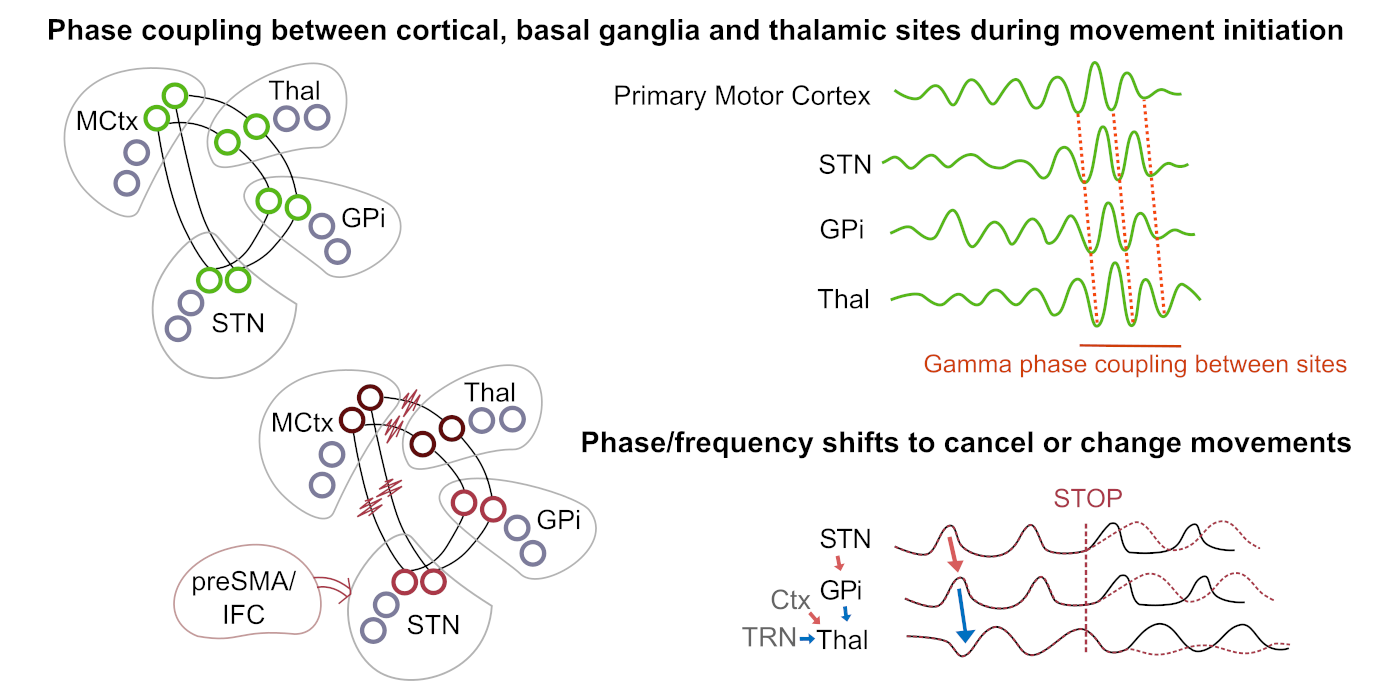Mechanisms of Network Interactions for Flexible Cortico-Basal Ganglia-Mediated Action Control.
Precisely how the mammalian brain controls and invigorates movement is unclear. Brief synchronization of nerve cell activity in specialized brain networks might be a key mechanism. This article describes in detail how synchronization of brain activity may enable flexible action control.
In humans, finely tuned γ synchronization (60-90 Hz) rapidly appears at movement onset in a motor control network involving primary motor cortex, the basal ganglia and motor thalamus. Yet the functional consequences of brief movement-related synchronization are still unclear. Distinct synchronization phenomena have also been linked to different forms of motor inhibition, including relaxing antagonist muscles, rapid movement interruption and stabilizing network dynamics for sustained contractions. Here, I will introduce detailed hypotheses about how intrasite and intersite synchronization could interact with firing rate changes in different parts of the network to enable flexible action control. The here proposed cause-and-effect relationships shine a spotlight on potential key mechanisms of cortico-basal ganglia-thalamo-cortical (CBGTC) communication. Confirming or revising these hypotheses will be critical in understanding the neuronal basis of flexible movement initiation, invigoration and inhibition. Ultimately, the study of more complex cognitive phenomena will also become more tractable once we understand the neuronal mechanisms underlying behavioral readouts.

2021. eNeuro, 8(3).
2022. PLoS Comput Biol, 18(3)e1009887.
2024. Hum Brain Mapp, 45(2)e26602.